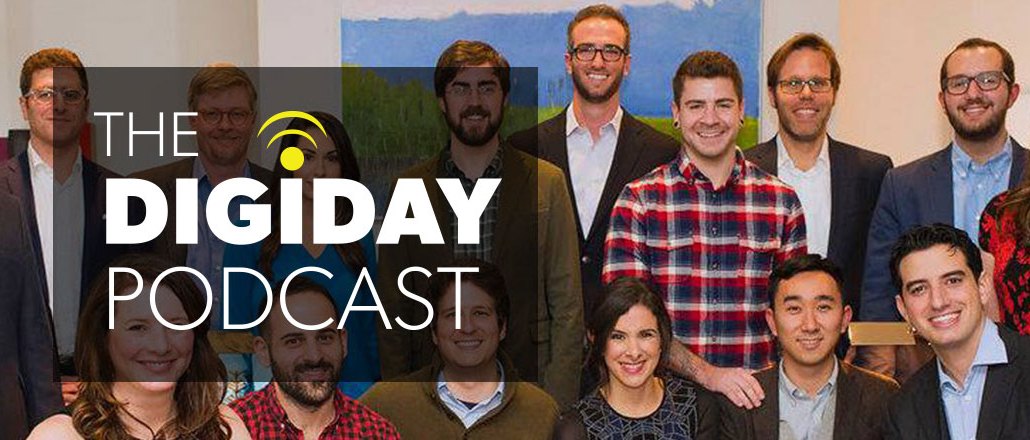Save 50% on a 3-month Digiday+ membership. Ends Dec 12.

At a time when most digital publishers are scrambling to amp up the quantity of content to meet ad goals, The Information is taking a different approach: It is producing just two stories a day — focused on issues like valuations for private tech companies and what’s next for Facebook — and charging $399 a year in order to read them.
The two-year-old Silicon Valley news site, founded by former Wall Street Journal reporter Jessica Lessin, now counts what she says are “thousands” of subscribers for its in-depth coverage. Lessin’s bet is many of the assumptions around “scale” in media — in particular the need to rely on advertising and do whatever is needed to expand audience size — are wrong.
“The big idea is to reach lots of people,” she said on this week’s episode of the Digiday Podcast. “We’re just going about it a different way.”
Below are highlights, lightly edited for clarity, from the discussion with Lessin:
“The business model around news is broken”
The spate of venture capital funding in news operations caused some, such as Business Insider CEO Henry Blodget, to declare a “golden age” of journalism. Lessin is a dissenter. She sees an environment in which news organizations are forced by their ad-dependent business models to focus on the wrong things.
“The business model for news is broken,” Lessin said. “We are overwhelmed by this race for traffic and pageviews over focusing on delivering value to an audience. We need to have the right formulas for delivering the next great generation of publications.”
Scale is a red herring
The knock on a subscription site like The Information is it won’t scale. It’s focused on tech and media decision-makers, not a consumer audience, and its $399 price point in a sea of free alternatives means its fate is to be a boutique publication with a decidedly small reach, the argument goes.
“It baffles me,” Lessin said. The Information model “totally scales — and it gives us control over how it scales. What doesn’t scale is high-priced events businesses, where you have to sell these huge one-off deals to be profitable that month. What doesn’t scale is crossing your fingers and hoping you’ll get a big ad deal. What does scale is having a product that people are willing to pay for.”
The secret advantage of a subscription media model: focus
There isn’t one correct media model. Publishers like BuzzFeed and Business Insider are amassing large audiences that can be monetized, for the most part, through advertising. But that business model means the content must follow: It has to be mass. The risk, Lessin said, is an eventual sameness, the perpetual regurgitation of the same viral sensation of the moment. Relying on subscribers means forced focus. The Information’s eight-person edit team, for example, publishes just two stories a day, as opposed to hundreds at many publishers.
“If you look at what a given publication publishes on a given day, a fraction of that is original,” she said. “Even publishers doing incredible original work, more than half — and some days 80 percent — is not original. We want everything we write to be bringing a lot of new information to the table.”
Facebook doesn’t care about publishers’ business models
The weight of the media world has moved inexorably west to Palo Alto, home to Facebook. The Onion captured the current publishing climate well in a piece last May about publishing executives making pilgrimages to Facebook to offer content at the feet of Mark Zuckerberg. Lessin, who has covered Facebook for several years, believes publishers often miss an essential reality: Facebook doesn’t care about their businesses. It just wants ways to get people to stay on its platform, whether that’s gaming or news articles.
“Facebook doesn’t care about the media world, and the media world thinks it does,” she said. “They care about content their users find engaging and valuable. Media is part of that.”
More in Media

Digiday+ Research: Publishers’ growing focus on video doesn’t translate to social platforms
Major publishers have made recent investments in vertical video, but that shift is not carrying over to social media platforms.

Technology x humanity: A conversation with Dayforce’s Amy Capellanti-Wolf
Capellanti-Wolf shared insight on everything from navigating AI adoption and combating burnout to rethinking talent strategies.

How The Arena Group is rewriting its commercial playbook for the zero-click era
The company is testing AI-powered content recommendation models to keep readers moving through its network of sites and, in doing so, bump up revenue per session – its core performance metric.





